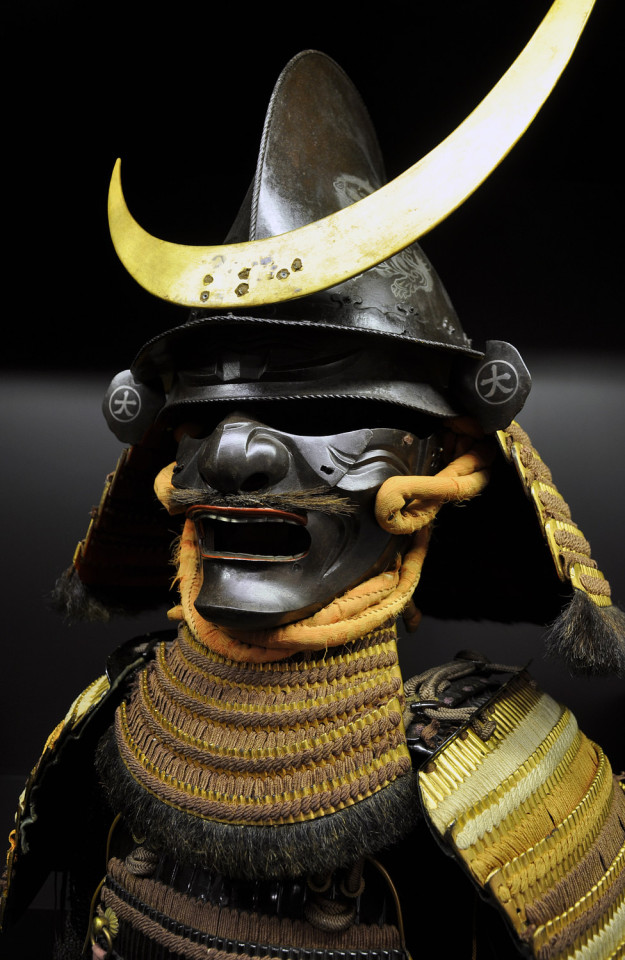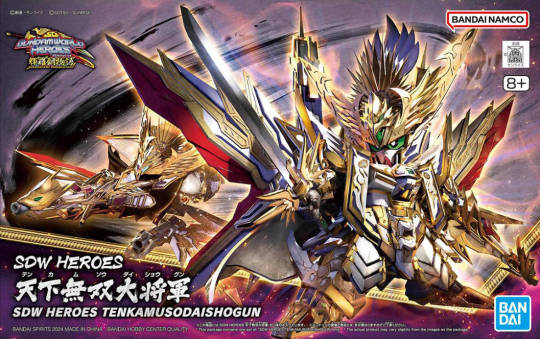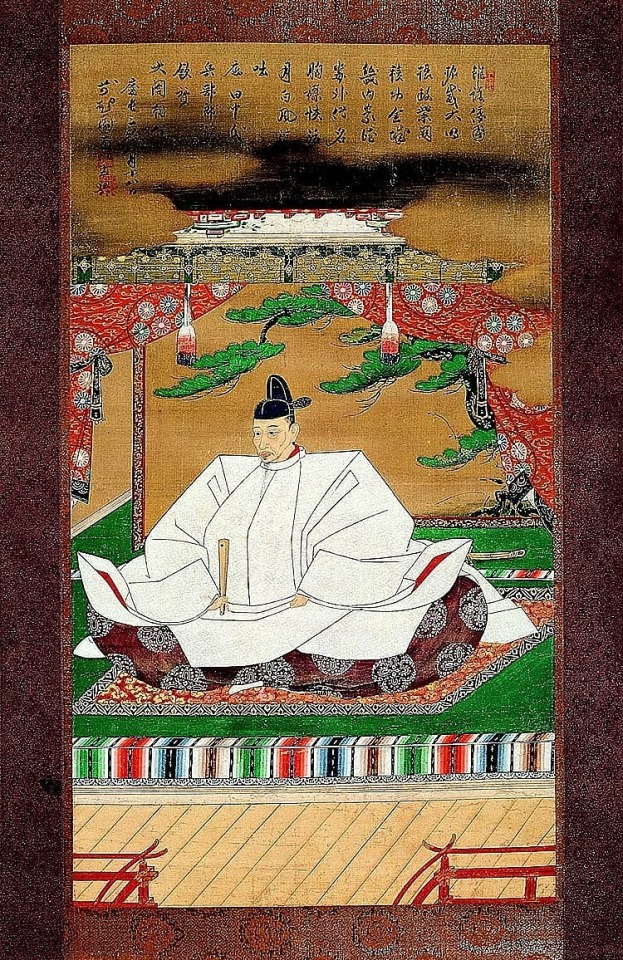#OdaNobunaga
Photo

Período Sengoku
El período Sengoku (Sengoku Jidai, 1467-1568), también conocido como el “período de los Estados en guerra”, fue una época violenta y turbulenta de la historia japonesa en la que señores feudales, también llamados daimio (daimyo), luchaban enconadamente por el dominio de Japón. Esta época se encuadra en el período Muromachi (Muromachi Jidai, 1333-1573) de la historia medieval japonesa, cuando la capital del shogunato Ashikaga se encontraba en el distrito de Muromachi, en Heian-kyo (Kioto). Los orígenes del periodo Sengoku se remontan a la guerra de Onin (1467-1477), que destruyó Heian-kyo. Los enfrentamientos que se produjeron a lo largo del próximo siglo acabarían reduciendo el número de daimios a solamente unos cientos mientras Japón se dividía en numerosos señoríos. Al final, uno de estos señores de la guerra se alzaría por encima de todos sus enemigos y sentó las bases para la unificación de Japón a partir de 1568: Oda Nobunaga.
Sigue leyendo...
90 notes
·
View notes
Photo

The Muromachi Period (Muromachi Jidai, 1333-1573 CE) refers to the period of Japanese medieval history when the Ashikaga shogun capital was located in the Muromachi area of Heiankyo (Kyoto). Replacing the Kamakura Shogunate (1192-1333 CE), the Ashikaga or Muromachi Shogunate (1338-1573) would oversee a depressingly warlike, rebellious, and brutal period of history which saw incessant rivalries between warlords and unchecked bandits plaguing the countryside. There were a few bright spots such as the construction of the Kinkakuji and Ginkakuji temples in Kyoto as well as progress in trade and commerce, the arts and castle architecture. The period ended with the warlord Oda Nobunaga seizing power in 1568 CE and his decision to exile the last Ashikaga shogun in 1573 CE.
46 notes
·
View notes
Photo

Époque Azuchi Momoyama
L'époque Azuchi-Momoyama (Azuchi-Momoyama Jidai, alias ère Shokuho, 1568/73-1600) est une période brève mais importante de l'histoire du Japon médiéval, qui vit le pays s'unifier après des siècles de faiblesse du gouvernement central et de conflits mineurs entre des centaines de seigneurs de guerre rivaux. Oda Nobunaga (r. de 1568 à 1582) s'imposa en tant que chef militaire du Japon, et son château d'Azuchi, à l'est de Kyoto, donna à cette période la première moitié de son nom. Le successeur de Nobunaga, Toyotomi Hideyoshi (r. de 1582 à 1598), poursuivrait son œuvre d'unification du Japon, et sa base de Momoyama, au sud de Kyoto, fournirait la seconde moitié du nom de la période. Hideyoshi se heurta à l'échec de ses deux invasions de la Corée, et la période se termina par le conflit de succession qui verrait Tokugawa Ieyasu établir le shogunat Tokugawa (1603-1868).
Lire la suite...
2 notes
·
View notes
Photo

*Lil John voice* Yeaa! Right about now it’s time for the Real Warlord Roll Call!! Now when your hear your African warlord being called you leave a comment! #charlestaylor #omarhassanahmadalbashir #josephkony #saniabacha #hailemariammengistu #robertmugabe #mobutuseseseko #gaddafi #jeankambanda #boscontaganda #hissenehabre #thomaslubanga #jeanbedelbokassa #fodaysankoh #generalbuttnaked All jokes aside these were the worst of the worst. But we at Kolanut thought if y’all write about #OdaNobunaga who was a tyrant why can’t we write about ours? So here is the controversial #16strikes #webtoon where you get to experience the spirit of the lords of war. #kolanutproductions #afroanime #africancomics #ncu (at Ontario, California) https://www.instagram.com/p/Cn5o65Wp-Cw/?igshid=NGJjMDIxMWI=
#charlestaylor#omarhassanahmadalbashir#josephkony#saniabacha#hailemariammengistu#robertmugabe#mobutuseseseko#gaddafi#jeankambanda#boscontaganda#hissenehabre#thomaslubanga#jeanbedelbokassa#fodaysankoh#generalbuttnaked#odanobunaga#16strikes#webtoon#kolanutproductions#afroanime#africancomics#ncu
1 note
·
View note
Note
Nobbu. How have you been enjoying your workout sessions with Fergus? Enough to keep going back behind Master's back?
Full Vid: https://files.catbox.moe/akdy0c.mp4
3 notes
·
View notes
Video
youtube
June 21st: Hidden Stories and Untold Tales - Find Out Now! #ytshort #shorts
#youtube#history thisdayinhistory june21 worldhistory onthisday historicalfacts odanobunaga ushistory militaryhistory educationalhistory asiashistory
0 notes
Text

Mariko in #Shogun 1980 and #ShogunFX 2024 on #DisneyPlus:
Her story is similar to that of her real-life counterpart, #HosokawaGracia. Gracia was part of a clan that betrayed and caused the death of #OdaNobunaga, one of Japan’s Great Unifiers, and escaped death because she was already married, too. Alone and forced to live as a prisoner in #OsakaCastle , Gracia turned to Christianity, which was frowned upon by her husband, #HosokawaTadaoki, with whom she also had a tumultuous relationship, but her rebellious temper would often keep him in check.
https://en.m.wikipedia.org/wiki/Hosokawa_Gracia
2 notes
·
View notes
Text

[News] Box-art & more images of SD World Heroes TenkamusoDaishogun
New blog post: https://erlangshen.weebly.com/sd-exp/news-box-art-more-images-of-sd-world-heroes-tenkamusodaishogun
#gundam #gunpla #plamo #hobby #sdgundam #SDガンダムワールドヒーローズ #mushaworld #odanobunaga #tenkamusodaishogun #Bandai
0 notes
Text
The Warrior Life of Yasuke: The African Samurai





youtube
https://youtu.be/0RZaHgXEhJ4
youtube
#black history#japanese history#samurai#eastafrica#east africa#yasuke#oda nobunaga#odanobunaga#afro japanese#jesuit#habshi#siddi#india#indian history#afro samurai#The Shogunate#Kings and Generals
423 notes
·
View notes
Text

The Demon King of the Sixth Heaven.
Special commissions for this kind of illustration are open!!
Commission Details: https://twitter.com/marinemirage/status/1455812280881270791?s=20
12 notes
·
View notes
Photo

El período Azuchi-Momoyama
El período Azuchi-Momoyama (Azuchi-Momoyama Jidai, también conocido como período Shokuho, 1568/73-1600) fue un breve pero significativo período de la historia del Japón medieval que vio al país unificado después de siglos de un gobierno central débil y pequeños conflictos entre cientos de señores de la guerra rivales. Oda Nobunaga (que gobernó de 1568 a 1582) se estableció como el gobernante militar de Japón, y su castillo en Azuchi, al este de Kioto, le da al período la primera parte de su nombre. El sucesor de Nobunaga, Toyotomi Hideyoshi (que gobernó de 1582 a 1598) continuó con su trabajo para unificar todo Japón, y su base de Momoyama, al sur de Kioto, proporciona la segunda parte del nombre del período. Hideyoshi quedó mal parado a causa de sus dos invasiones fallidas de Corea, y el período terminó con el conflicto de sucesión que vería a Tokugawa Ieyasu establecer el Shogunato Tokugawa (1603-1868).
Leer más...
1 note
·
View note
Photo

Toyotomi Hideyoshi
Toyotomi Hideyoshi (1537-1598 CE) was a Japanese military leader who, along with his predecessor Oda Nobunaga (1534-1582 CE) and his successor Tokugawa Ieyasu (1543-1616 CE), is credited with unifying Japan in the 16th century CE. Hideyoshi rose from a humble background to become the country's military supremo, and he then reorganised the class system, instigated tax reforms, built castles, restored temples, and launched two invasions of Korea. Hideyoshi's foreign ambitions may have met with disaster but his restructuring of the state would establish the social and political norms which endured in Japan until the 19th century CE.
Nobunaga & Taking Power
Hideyoshi, originally named Kinoshita Hiyoshimaru, was born into a peasant family in 1537 CE. As a young man, he joined the army of the military leader/warlord Oda Nobunaga and rose through the ranks to eventually become a general and the most important military commander in Nobunaga's endeavour to conquer rival feudal lords and so unify Japan. Hideyoshi might have gained his overlord's respect as a commander but his small physique resulted in Nobunaga giving him the unflattering nickname of Saru or 'monkey.'
In 1582 CE Nobunaga was betrayed by one of his vassals, Akechi Mitsuhide, and obliged to commit suicide to avoid being handed over to his rivals. Hideyoshi, first killing Mitsuhide, then manoeuvred to gain the support of Nobunaga's relations and other important daimyo or feudal lords. He was thus able to install himself as the new military supremo in Japan, as yet, still only half of which was unified.
Hideyoshi, now commanding a force of some 200,000 men, successfully combined military campaigns with diplomacy amongst his rival daimyo to establish himself as the ruler of most of Japan in 1590 CE. In a five-year period beginning in 1585 CE, Hideyoshi had attacked western Japan, Kyushu and Shikoku. Success followed success, but there were some troublesome battles, notably the 100-day siege needed to take the castle of Odawara, the seat of the powerful Hojo family. The castle finally fell in 1590 CE and with it the last obstacle to Hideyoshi's rule. Other enemies had proved more amenable to negotiation and were offered to keep some of their lands. Notable amongst these were the Shimazu of Satsuma and the Mori of Choshu.
As with other military leaders before and after, Hideyoshi might have dominated the field of battle but he still sought legitimacy from the monarchy. To gain royal favour from the emperor who had no real power of his own, he gave money for court ceremonies and rebuilt the palace at the capital Heiankyo (Kyoto). Hideyoshi added another, much more bizarre claim to his legitimacy to rule by stating his belief that he was descended from the Shinto sun god. There were even performances of Noh theatre telling this story which Hideyoshi himself performed in. The cherry on the cake came when Hideyoshi adopted the prestigious family name of Fujiwara, began to call himself Toyotomi Hideyoshi, and ultimately awarded himself the title of Taiko ('retired regent'), which was higher than that of the shogun, the title his military predecessors had taken.
Continue reading...
21 notes
·
View notes
Photo

Toyotomi Hideyoshi
Toyotomi Hideyoshi (1537-1598) était un chef militaire japonais qui, avec son prédécesseur Oda Nobunaga (1534-1582) et son successeur Tokugawa Ieyasu (1543-1616), unifia le Japon au XVIe siècle. Hideyoshi, issu d'un milieu modeste, devint le chef militaire du pays. Il réorganisa ensuite le système des classes, instaura des réformes fiscales, fit construire des châteaux, restaura des temples et lança deux invasions de la Corée. Les ambitions internationales de Hideyoshi se soldèrent peut-être par un désastre, mais sa restructuration de l'État permit d'établir les normes sociales et politiques qui perdurèrent au Japon jusqu'au XIXe siècle.
Lire la suite...
3 notes
·
View notes
Photo

This winter has been so brutal got us thinking about #summervibes already. #kolanutproductions has some heat for you! Here are some highlights: on #webtoon you can read our landmark comic #redorigins. We have plenty of animation as well see link in bio. Next is #rumbleinthejungle, which explores what an #african #ufc would like, exploring all #africanmartialarts. #imjinwars is tells the story of what happens to #yasuketheblacksamurai after #odanobunaga dies. Lastly our #raciallymotivated and #fredhampton inspired story called #RastheBlackMessiahs This story is deep. Ethiopia was never conquered by Europe and we explore who has the unconquerable black spirit. #manga #anime #webcomic #art #comic #manhwa #webtoonedit #comics #digitalart #webtoons #drawing #illustration #webcomics https://www.instagram.com/p/Cnrtjt-LDPk/?igshid=NGJjMDIxMWI=
#summervibes#kolanutproductions#webtoon#redorigins#rumbleinthejungle#african#ufc#africanmartialarts#imjinwars#yasuketheblacksamurai#odanobunaga#raciallymotivated#fredhampton#rastheblackmessiahs#manga#anime#webcomic#art#comic#manhwa#webtoonedit#comics#digitalart#webtoons#drawing#illustration#webcomics
1 note
·
View note
Photo

#ikemensengoku #ikemenseries #odanobunaga #fanart #otomegame #otomegame #manga #comic https://www.instagram.com/p/CAO4aeTJt8B/?igshid=8u2bnwyldqzw
3 notes
·
View notes







